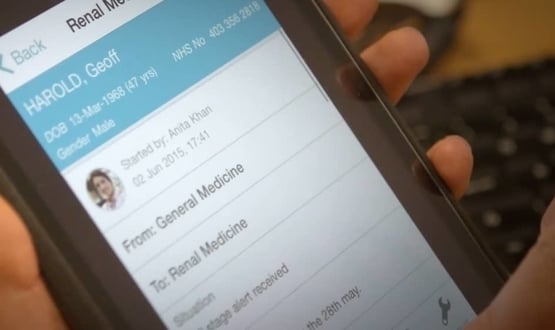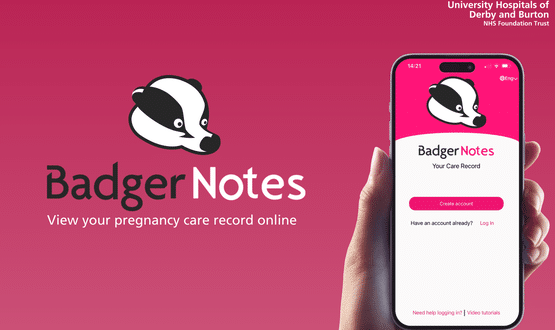UHBW improve patient safety with digital innovation from System C
- 19 May 2023

Pioneering use of digital clinical noting from System C has enabled University Hospitals Bristol and Weston NHS Foundation Trust’s busy paediatric Emergency Department (ED) at Bristol Royal Hospital for Children (BRHC) to reduce reliance on paper forms.
The new electronic processes, powered by System C’s CareFlow Clinical Noting, have halved the time it takes to triage patients, ensuring care is directed rapidly at the sickest children.
In a further boost to patient care and safety, the rollout of a new digital Casualty card (Cas card) is transforming documentation and communication around the hospital – with significant efficiency and time-saving benefits.
Bristol Royal Hospital for Children, the only paediatric major trauma centre in South West England, provides a wide range of specialist paediatric surgery and consultancy services and has 10 wards, an intensive care unit and a Paediatric Emergency Department (ED).
UHBW’s decision to introduce the new system in paediatric ED was based on the department’s key role as an entry point to the hospital and by the increasing demand in ED, which is putting more pressure on stretched resources and potentially impacting patient safety.
In winter 2022, with a Group A Strep (Scarlet Fever) outbreak alongside peaks in Covid-19, RSV, and influenza, the Paediatric ED saw the average numbers of patients in the waiting room rise consistently and surge by up to 300% at times.
Without digital clinical noting and improvements in triage processes, patient care would have been compromised.
Mark Lyttle, consultant and senior research fellow in Children’s Emergency Care at UHBW, said: “Infections and events such as chronic asthma attacks can quickly escalate in children, so triaging patients and alerting a clinician as quickly as possible is essential.
“But the danger signs can easily go undetected in a hectic ED environment, especially when the waiting room is full and the triage process is reliant on time-intensive form filling and a slow process, creating risk to the most critically ill children.
“Putting digital notes at the heart of the triage process has had a significant impact on how quickly we identify and treat patients who need immediate intervention. This innovation is a big improvement on previous practices, allowing us to triage patients much more quickly and flag and treat those most at risk.”
CareFlow developed with hospital needs in mind
CareFlow Clinical Noting has replaced paper or electronic proforma and the team developed the Triage Details screen to be specific to their patients, incorporating the Manchester Triage System – the score-based clinical risk management tool used in EDs to ensure that patients are seen in order of clinical priority, rather than order of attendance.
Nurses now follow prompts on an electronic form, entering data and key observations of the patient’s condition that will automatically trigger any potential alerts (e.g. a high temperature or breathlessness).
This process, coupled with the introduction of CareFlow Vitals, minimises free text data collection and removes the movement of paper around the ED. This saves time and improves the quality of data captured during triage.
Using digital systems means vital information can now be captured and displayed in real time, so critical data regarding the patient’s condition can be seen and acted on without delay. Screen alerts immediately flag up areas of concern, such as sepsis risk, notifying the medical team that a particular patient needs emergency attention.
The successful rollout has more than halved triage times, saving over 10 minutes per patient. Further improvements are planned to bring triage to less than 4 minutes per patient.
The introduction of the Cas card has extended noting capability to all ED clinical documentation. Capturing essential information electronically at each key state of the patient journey means that instead of transferring paper forms by hand, the Cas card electronically ‘follows’ the patient throughout the ED and observation unit.
Data is updated in real time on the patient’s digital Cas card to create an end-to-end electronic pathway, enabling visibility of critical clinical information, and tracking and management of all interactions across the different care settings – for example, ED to acute inpatient, theatres, X-Ray or ICU.
To date it has been used over 20,000 times and has received numerous instances of positive feedback.
Max Ward, head of clinical systems at UHBW, said: “In ED you don’t always see things coming, but this improvement has helped to make us ready for the future and enabled us to successfully manage unexpected volume peaks.
“Since its introduction, it has already delivered huge benefits in terms of patient flow, data reporting, push-pull data streams, decision making and providing trigger warnings.
“We’ll be building on this initiative in the next phase of our digitisation plan to create a more holistic view of the whole patient journey and transform the way people access our healthcare services.”
System C is a major supplier in acute EPRs with 30 NHS Trusts.




